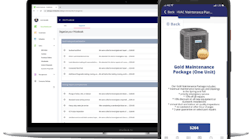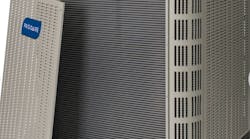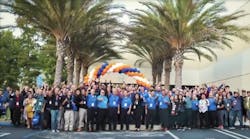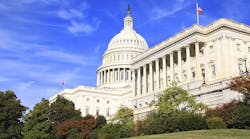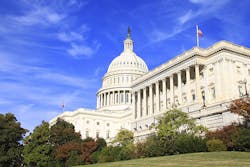It is time to remove a quirk in the tax law that has for years hamstrung commercial building owners from retrofitting millions of commercial buildings across the country. Congress can enact a simple fix this fall that could be a game changer in the effort to improve energy efficiency, reduce emissions, and create thousands of new jobs.
Section 179 of the Internal Revenue Code is a popular tax incentive that allows millions of businesses, both large and small, to expense the costs of certain capital investments. Qualified investments include machines and large tools for business use, business vehicles, computer software, office furniture, and in some cases, items used for both business and personal use.
One of the reasons Section 179 is so widely used is that the amount that a business may expense is significant, especially for a small business. Between 2010 and 2014 the expensing limit was $500,000 qualified capital expenditures — subject to a phase-out once these expenditures exceed $2,000,000.
In reality, the expensing limits are temporary, passed by Congress as part of an annual tax extenders package. Without these expansions, the expensing limit is $25,000 for qualified investments in a single year.
Many companies in the HVACR industry have taken advantage of the elevated expensing limits in past years to justify substantial investments that have allowed them to hire more workers, improve efficiencies, and expand their businesses. But the temporary nature of the extensions makes long-term planning difficult.
But there is one big problem with Section 179. Tucked away in Section 179 (d) (1) of the IRS Code under definitions and special rules is a single line that says, “Such term … shall not include air conditioning or heating units.” No tax expert I’ve talked to knows why it’s there. But this language excluding commercial HVACR units from the list of qualified investments means building owners must rely on the 39-year depreciation schedule in order to recover the costs of new HVACR equipment.
There is a remedy in sight. Earlier this year, Representative Pat Tiberi (R-Ohio) introduced H.R. 636, America's Small Business Tax Relief Act of 2015, to permanently extend the expanded Section 179 business expensing rules. Permanency would remove the uncertainty caused by repeated short-term extensions and allow small businesses greater flexibility when making investments.
H.R. 636 was approved by the House of Representatives on Feb. 13, 2015, by a bipartisan 272-142 vote.
The most significant provision in H.R. 636 almost went completely unnoticed. Buried in the bill is what I call the HVACR Fix: (d) Air Conditioning And Heating Units.—Section 179(d)(1) of such Code is amended by striking “and shall not include air conditioning or heating units.”
There are remarkable benefits from striking the exemption of air conditioning or heating equipment from the qualified investments eligible for Section 179 expensing. This small modification creates energy savings opportunities for small businesses and commercial building owners across the nation.
According to the U.S. Energy Information Administration’s 2003 Commercial Building Energy Consumption Survey (CBECS), 57% of the energy consumed in commercial buildings is for HVACR-related activities. Small business owners today have little incentive to upgrade their HVACR systems since they must amortize the investment over 39 years because they are not eligible for Section 179 expensing. Too often this forces decision makers to repair and maintain older, inefficient equipment because the short-term costs are lower, despite the potential for long term savings.
There is tremendous pent up demand in the commercial building marketplace for HVACR system replacement. The 2003 CBECS (the most recent available) found that the less than 20% of buildings constructed before 1980 currently have upgraded HVAC equipment.
Thanks to increased federal energy conservation standards and the efforts of HVACR equipment manufacturers, today’s equipment uses less energy and is cheaper to operate on an annual basis than equipment purchased even 10 years ago.
H.R. 636 now faces consideration in the U.S. Senate where the Finance Committee will be working on extending nearly 50 tax incentives, some of them permanently, including Section 179, which expired at the end of last year. Including the HVACR fix as part of the extenders package would be a game changer in the effort to improve the energy efficiency of commercial buildings and spark a replacement boom in commercial HVACR equipment.
A small but powerful coalition of HVACR-related organizations have been pushing for the HVACR Fix since the beginning of the year. ACCA, along with the Air-Conditioning, Heating and Refrigeration Institute, ASHRAE, Heating, Air-conditioning and Refrigeration Distributors International, Mechanical Contractors Association of America, Mechanical Service Contractors of America, National Air Filtration Association, Plumbing Contractors of America, Plumbing-Heating-Cooling Contractors—National Association, and the Sheet Metal and Air Conditioning Contractors' National Association have sent several letters to Congress in support of H.R. 636 and the HVACR Fix.
Passing the HVACR Fix would translate to shorter payback periods for commercial HVACR equipment and long-term cost savings for building owners, as well as lower greenhouse gas emissions. In addition, older equipment could be retired, eliminating refrigerants that, if leaked into the atmosphere, represent a much greater risk than today’s modern, efficient, more environmentally-friendly systems.
Charlie McCrudden is vice president of government affairs for the Air Conditioning Contractors of America. Contact him at [email protected].

